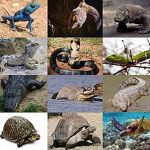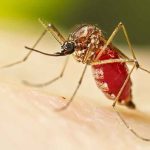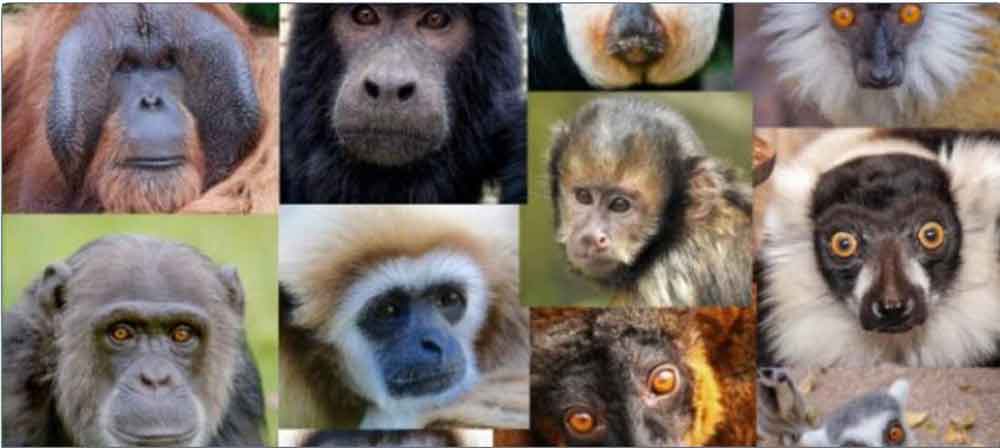Dr. N. Munal Meitei,
Environmentalist, email-nmunall@yahoo.in

International Primate Day is observed on 1st September since 2005 to honor, learn and take action for our planet’s diverse array of primates. Primates, ranging from charismatic chimpanzees, orangutans and the gentle gorillas to the elusive monkeys and the wisest great ape human. They inhabit in various ecosystems, from lush rainforest to arid savannas, playing vital roles in maintaining ecological balance.
Globally more than 25% of mammal and primates face extirpation and extinction. Of the 500 species of primates, only one, the human, exceeds more than 99% of the total population and hence we should protect our remaining primate friends. Primates existed 70 million years ago from a common ancestor for the different groups of prosimians, monkeys and apes which populated our planet. We have arrived to every corner of the planet but with our colonization, the rest of the primates have been disappearing and constricting in smaller areas. Human have evolved and developed with 8.23 billion populations and our progress is directly proportional to the loss of biodiversity. Human progress is not only disastrous to nature, but is turning against us also.
Among the peculiarities, primates have large brains, visions, hands with palms adapted for grasping, toed feet, sexual dimorphism, long life span and slow growth, few offspring usually one at a time and complex social groups but with less adaptability to the changing environment. The diet can be vegetarian and also omnivorous; some species are solitary, others form pairs with groups dominated by males; some have terrestrial habits and others are arboreal, so agile that they seem to fly in the leafy sky; we find quadrupeds and bipeds; some have useful prehensile tails and some are intrepid swimmers.
The chimpanzee and bonobo are humans’ closest living relatives. Chimpanzees share approximately 98-99% of their DNA with humans. The Eastern Gorilla is the world’s largest primate, male reaching up to 5.6 feet tall. The Silverback gorilla is physically the strongest of all apes having the strength of about 8 healthy men. Kibale National Park in Uganda is known as the “Primate Capital of the World.”
India has long been known as one of the rich global primate habitats, both in species diversity and population abundance. The country harbors with 24 non-human primates but occupy less than 15% of the area with 70% of such population mainly in evergreen, semi-evergreen and moist-deciduous forests of the Eastern Himalaya, Western Ghats and Southern states. Hoolock gibbon with 12000 populations is the only ape found in India. The hoolock gibbon, unique to India’s Northeast including Manipur is one of 20 species of gibbons on Earth.
Primates play a very important role in restoration of forests and ecosystem stability including seed dispersal and predation, function as pollinators and insectivores and help to maintain biodiversity. Primates tend to be less ecologically flexible than other mammals and particularly vulnerable to fragmentation effects. Identifying threatened primates requires determining where species occur and how occurrence is influenced by wildlife reserves, landscape characteristics, human densities and human cultural tolerance.
Many primate taxa are inherently rare and Indian primates are among the most threatened species. Their habitats are under pressure from mining, dams, roads, railways and tourism. Although protected by the Wildlife Protection Act, Indian primates are widely trapped, hunted and traded.
Primates, play important roles in the livelihoods, cultures, religions and in the ecological balance. In absence of those seeds dispersed by primates, plant populations can dramatically change and decline. They are prey, predator and mutualist species in food webs thereby influencing ecosystem structure, function and resilience. An important fact is that primates are closely linked to the diversification and spread of angiosperms, the principal source of food for many including humans. Thus, primate conservation is directly link to human food security.
Protecting primates and their habitats is crucial. Most primate populations are declining due to hunting, disease, climate change and the loss, degradation and fragmentation of their habitats and disease transmission from humans and domestic animals, dog predation, human-primate conflict, isolation and continued changes in land use. Thus, 60% of primate species are now threatened with extinction and 70% have declining populations.
The best way to support the habitat and conservation of primates is through tourism. About 800 mountain gorilla left in Uganda earns US$820 million annually which is 60% of their country’s foreign exchange. Having tourists come to visit the national parks and pay tracking fees, enables for the management and preservation of their unique habitats and survival.
The country’s northeast region, a biodiversity hotspot, prides itself in providing the right environment for primates and boasts the highest primate diversity in the country. Sadly, many of them no longer have the freedom of nature’s bounty. Their habitats are fast decreasing and they are holding onto what is left in hopes of survival. Loss of land and depletion of food sources have limited many of the primate species to fragmented patches. They have had to alter their diets as artificial plantations have taken over their homes and are now exposed to conflict situations as agricultural lands and developmental projects become as their next-door neighbours.
However, lack of awareness often leads to primates being killed for food, perceived medicinal benefits, in retaliation to crop damage or for many more reasons. Beyond secure habitats, primates need compassion and a better understanding for all their threats so that every individuals and communities can be involved in safeguarding the surviving of primates, the human’s closest relatives.













